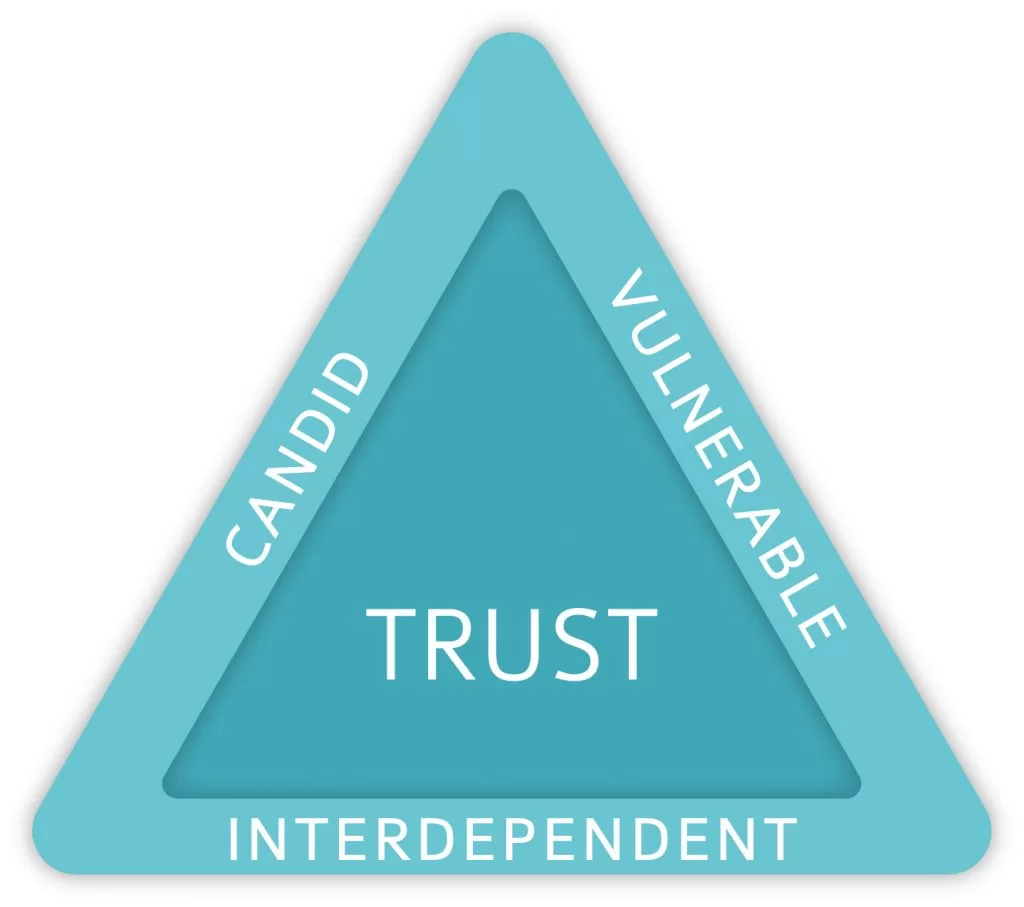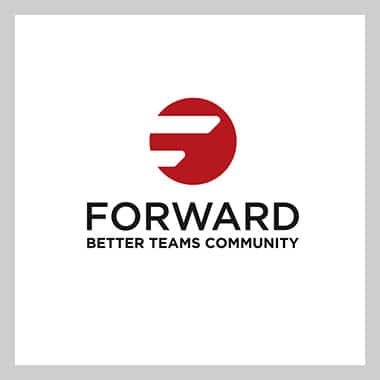Signs Your Team is High in Trust
While trust itself is invisible, there are specific things you can observe in a team that is high in trust. Trust is the foundation of a happy and high-performing team.
Trust does not simply exist, it is cultivated through actions over time. When trust is absent or damaged, a team will experience more conflict, less engagement, and a reduced ability to meet goals. Furthermore, if trust is low, morale will be low and retention will suffer.

In the Better Teams Model & Assessment, Trust is the largest of the five key areas because it is critical. The other four areas of the Better Teams are drivers to help a team build and maintain trust.
Here are three signs to know if your team has high trust:
1. Team members are candid with each other.
When trust is high between people, they are open to talking candidly about what they want, how they feel, and even debate constructively.
Here are some observations you might make in a team with high trust:
- Team members go straight to each other when there is an issue. They do not talk about each other or go straight to the leader, expecting them to resolve the concern.
- Team members will openly debate and challenge each other’s thinking. Each person understands that they are not personally being challenged and appreciates their peers’ coaching and different perspectives.
2. Team members are willing to be vulnerable with each other.
To be vulnerable, one must feel safe. When trust is high, a team member will feel safe expressing fears, weaknesses, and mistakes, knowing that their peers will support and help them instead of judging them.
When team members are vulnerable, you might observe team members:
- Ask for help.
- Acknowledge mistakes or errors.
- Share openly about something that is upsetting.
3. Team members are interdependent.
Teams who trust each other lean in on each other. Interdependence is about recognizing team members need each other. Teams who trust each other lean in on each other. Collaboration and input make for a better result, even though sometimes it takes more effort.
Below are signs that a team is interdependent:
- Team members seek each other out for feedback.
- Team members are open and transparent about what they are doing, where they are struggling, and where they are excelling so that others can engage.
- Team members collectively work towards goals together, instead of working in silos.
Observe your team and look for behaviors that signify their trust. When you find areas or actions that indicate that trust is lacking, address the elephant in the room.
Want to assess your team’s level of trust and other areas of happy and high-performing teams? Check out the Better Teams Model & Assessment.
Get our free e-book with more details about The Better Teams Model here.
About the Author: Leigh Ann Rodgers, Founder of Better Teams and the Forward, community, is an IAF Certified Professional Facilitator with 20 years of experience in the human development field. Leigh Ann is a skilled meeting facilitator, trainer, and coach working across the globe to help leaders cultivate teams that are happy and high-performing.
Learn. Share. Practice. Move FORWARD. Join the Better Teams community, FORWARD, to network and grow with some of the most experienced professionals in the field of team building and facilitation. LEARN MORE

